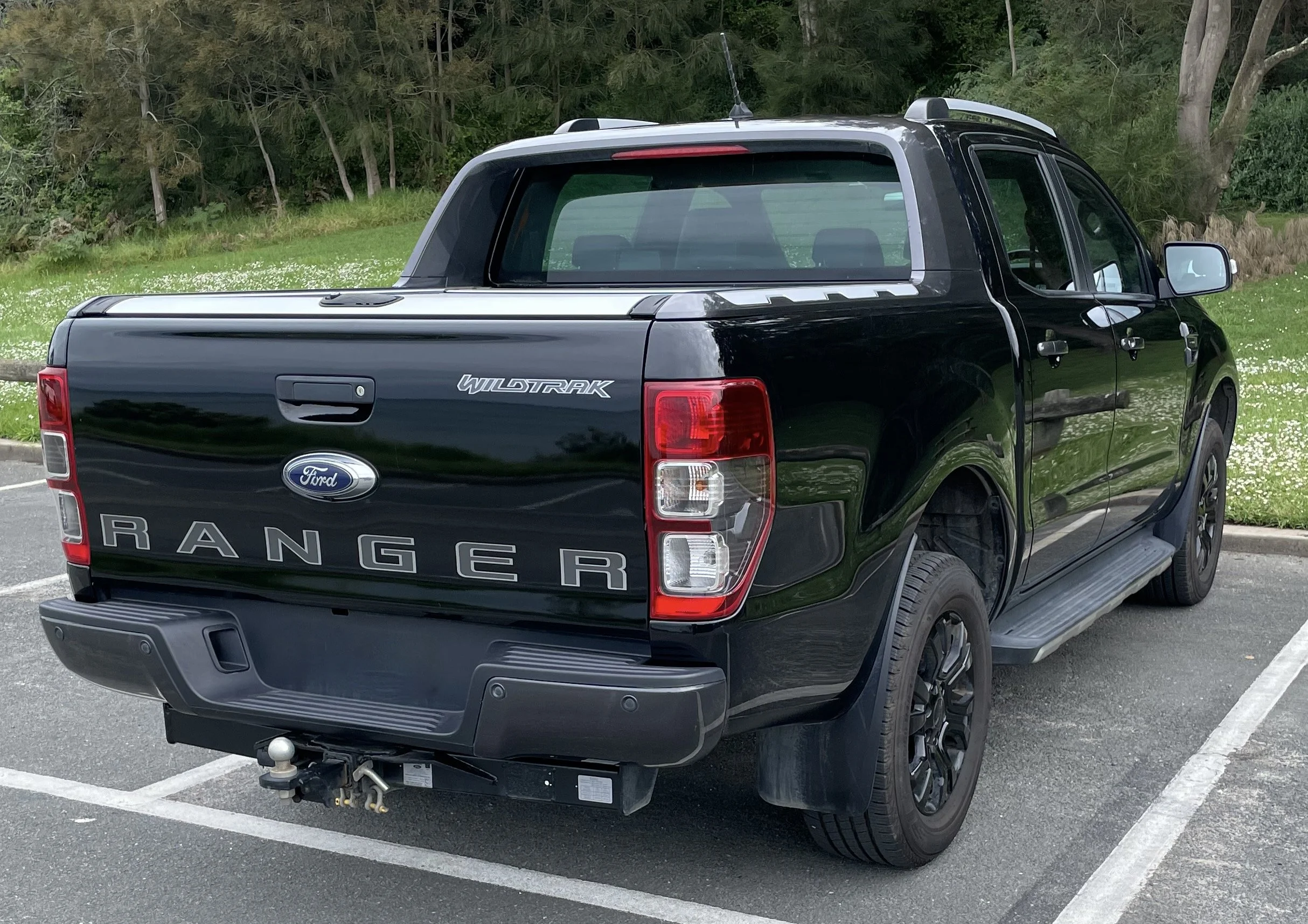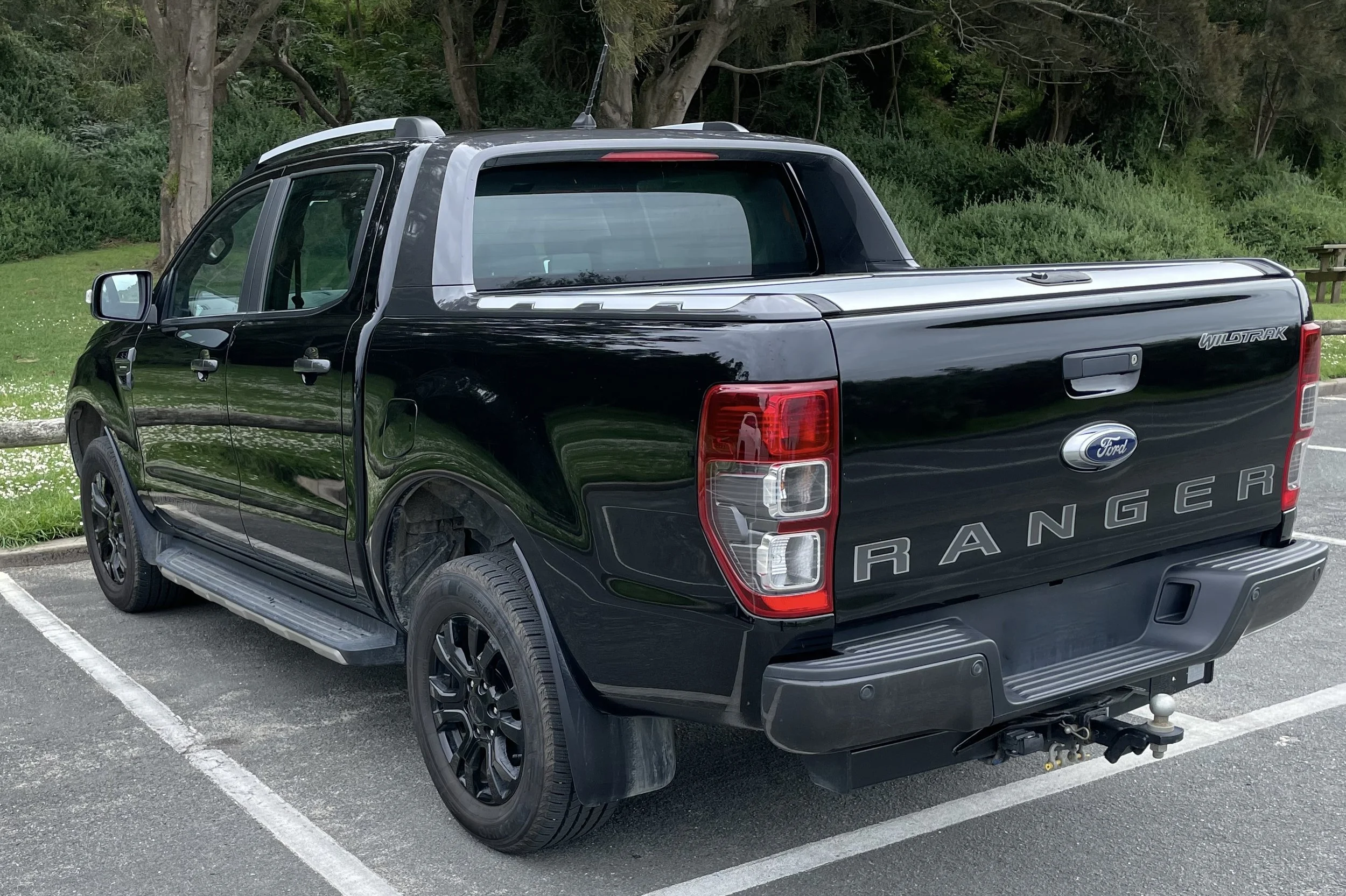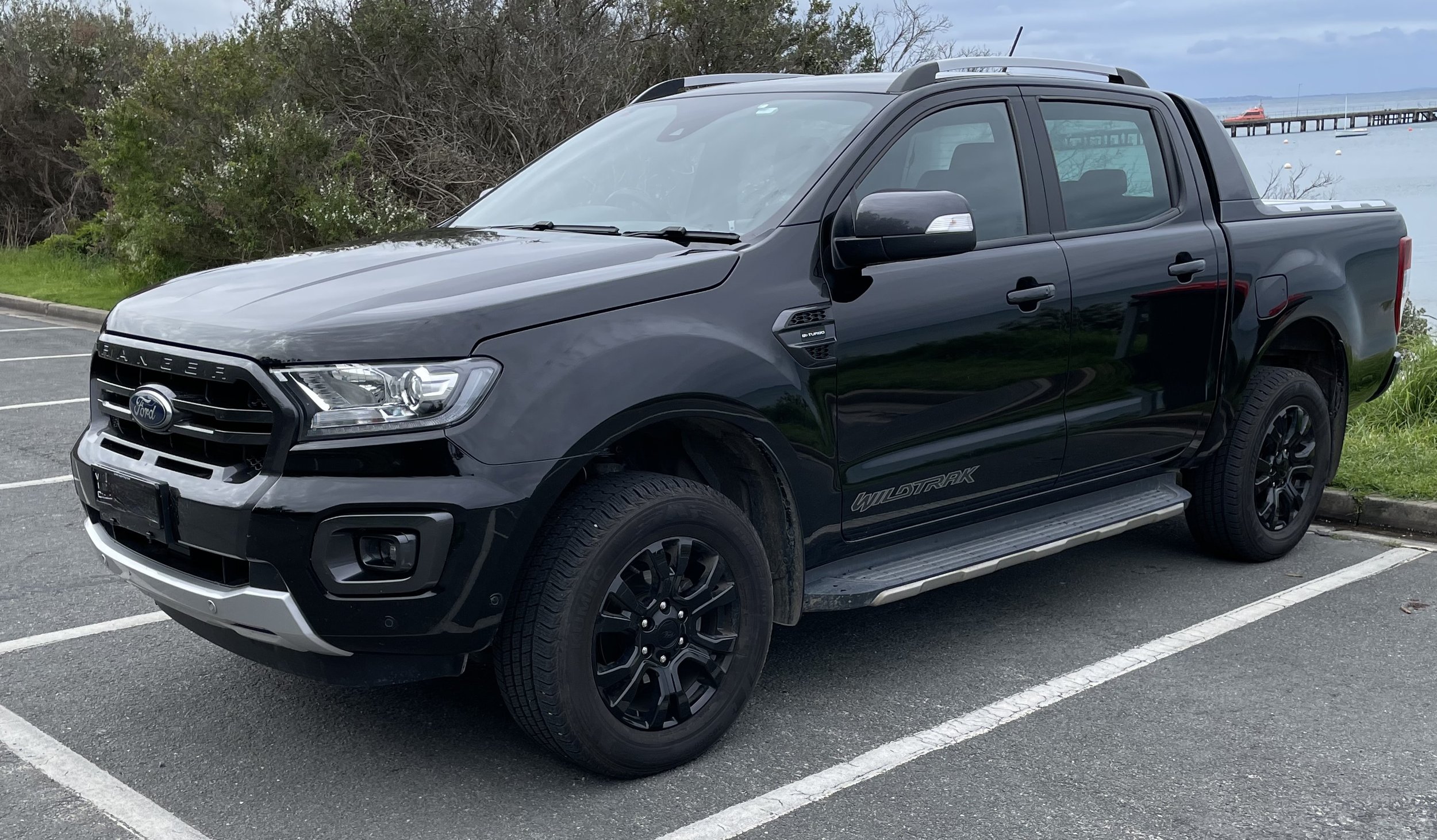I'd had my Ford Ranger Wildtrak 2018 since new, and I'd previously had a first generation Ford Ranger the "PXI", which was great. It was the vehicle I used to go to Woomera, to go along the Eyre Highway to Perth and back, I did the Western Explorer road in that Ranger. It was comfortable, easy to drive and predictable.
But it was also a little bit of a 'parts bin job', that first generation didn't have CarPlay, didn't have a digital speedo, the centre console area was from the Transit, while the dash was from a Focus.
So I decided to upgrade to in 2018 to upgrade to the 2.0 Bi-Turbo, thinking that more efficient, plus that 10-speed auto would make things better.
It...wasn't amazing.
I'd been on a road trip to Tasmania before the pandemic in 2019, and Canberra in 2021, and in 2022.
But there were some issues which manifested shortly after I bought it, the 10-speed auto was somewhat indecisive, it seemed like it didn't like you driving the vehicle in some circumstances. I got used to as soon as I was on a freeway or highway of putting it in cruise control, because letting it do its thing was much easier for me than having it hunt around for the gears if I was the one in control of the throttle.
I had become accustomed to this issue, the foibles of the gearbox, I'd learnt how and when it would do its weird gearshift.
But then on a recent trip up to Ikea, I was sitting in the middle lane on the Princes Highway and as I went from a standstill at the traffic lights and put my foot slowly on the accelerator pedal it just seemed to rev up through the rev range and then really, really hesitate and then it was a thump and it changed gear. Almost like it was ready to stall. It didn't, but it did worry me.
After stopping at Ikea, turning it off and waiting 10 minutes I restarted to see if there were any warning lights or any indications that there was anything wrong. There wasn't, so I went about my day's intent and bought some reasonably priced flat-pack furniture and returned home.
Turned out that reasonably priced piece of furniture which had poor reviews because it was hard to put together, was not an exaggeration, it was really hard to put together, nigh on impossible. So I was back up on the Princes Highway the following day to return it, and while on the way there I experienced no transmission shifting issues this time. However, I did not feel as comfortable as I had done so.
I went on to drive it a bit, did my failed trip and another trip to Canberra.
It went in for a service after that trip and I mentioned the gearbox problems to them, and they did a software update.
Which turned out to be one of the worst things they could have done. Yes, before the software update it was a little unpredictable at times, it was a little weird, but like an old car I'd worked out how to work with it, how to live with its problems.
But now, it was just worse.
Instead of changing gears smoothly, it would hold onto the gears for a moment or two too long then jerk and gear change. And the most annoying thing is that it was in the 40-60 kilometre speed range, the speed where you're most commonly going to be doing that around and about, or when you're driving off at the lights.
I went back to Ford and mentioned this, and asked if they could downgrade the software, at least I knew how it worked, even if it wasn't great. I didn't expect they would be able to do that, downgrading a computer's operating system or a phone's is a bit of an ordeal, doing it to software in a vehicle's subsystem like the gearbox control I suspected was something that they wouldn't be able to do. And no was the answer, but I had to ask.
They did take it under warranty for a day and checked it. When I got it back they said there was nothing wrong with it, that it was functioning as expected. They topped up the transmission oil though.
This...improved things? For a time, but it still wasn't pleasant. It was okay.
I had lost trust in the vehicle to be consistent and therefore safe. I didn't ever want to be in traffic and it be shifting unpredictably, and that was one of my concerns with its unpredictability.
There were other smaller, though no less irritating things that also contributed to this decision to change it for something else.
There was a rattle / buzzing noise around the start stop button, it was from one of the plastic panels not sitting perfectly fine, and only started to make this noise when the ute had been in the sun for a while. I narrowed it down that the temperature had to be at least 22ºC exterior temperature as indicated on the dash before it started to make this noise. I did mention this when it went in for a service, and they said they fixed it...however while it happened less, it would still happen, and thumping it with my leg (which had previously stopped it) no longer did anything.
There was also a noise, a buzz / rattle noise from...'somewhere on the passenger side' of the cabin, I thought it was somewhere near the A-pillar. But with passengers, who could hear it, but couldn't work out where it was coming from. It was much more of an intermittent fault, and therefore hard to explain.
There was also a buzzing from the centre of the dash, near the windscreen only when the windscreen de-mister was on heat and on a high temperature – so if in cold weather and de-misting the windscreen. Again I suspect that was just the plastics reacting to the heat.
I dealt with these by either having audio playing loud enough not to hear it, or to have the aircon on high on a hot day to cool the cabin down so these things plastic things didn't do their buzzing thing.
But as someone who wants a good road tripping vehicle, many of these things added up, and made me think that a Ranger wasn't the best vehicle for me...or so I'd thought.




